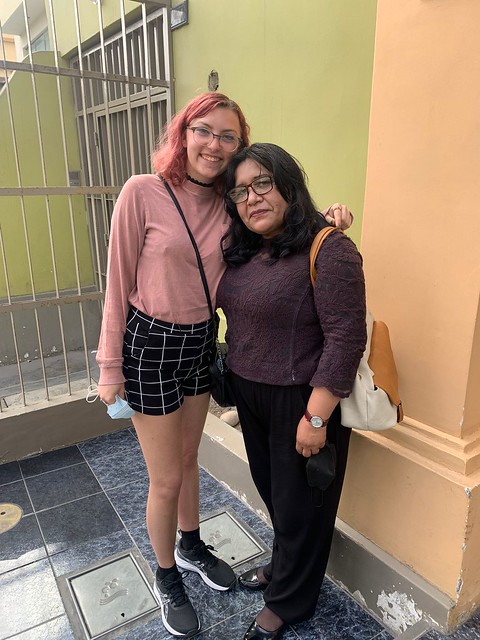Spending four days hiking the Inka* trail was one of the most incredible experiences of my life. The first day was full of breathtaking views, and we were surprised with almost gourmet meals set up for us by our team of porters along the way. When we sat down for lunch, we were served … Continue Reading ››
Peru: El Carmen
One of my favorite days of the trip so far was the Friday of a weekend trip to a small town called El Carmen, located in the province of Chincha. When we arrived, we ate a delicious lunch at the home of the Ballumbrosio family, a family well-known in Chincha for their dancing … Continue Reading ››
Peru: shout out to host families
When I thought about spending three months in Peru, I had a lot of fears. I worried about learning a new language, learning how to use public transportation, and standing out as a tourist. Once I arrived, I realized that using public transportation is easy, standing out as a tourist is inevitable, and … Continue Reading ››
Peru: The Fog of Winter
Garua!
Living in the Southern Hemisphere at the end of October means that we are transitioning into Spring! Warm sunny days are slowly replacing the dense fog and humid cold of the city. Most of our group is used to American winters. We know what to expect and how to dress for … Continue Reading ››
Peru: Museo Larco
On September 7th, we visited Museo Larco in Lima. The first part of the museum featured a grid displaying the timeline crossed with geographical regions. It provided an image on which to begin the following historical venture. We then proceeded to walk chronologically through the art of Peru. We started in the pre-ceramic … Continue Reading ››
Peru – First Impressions
First Impressions…
Cross-cultural programs are notoriously busy! We are taking a full load of college courses while navigating a gigantic city (think NYC with 10x less infrastructure) with traffic patterns that aren't really patterns at all. Everyone and everything needs to be filtered through Spanish, and the history and customs and politics and every … Continue Reading ››






